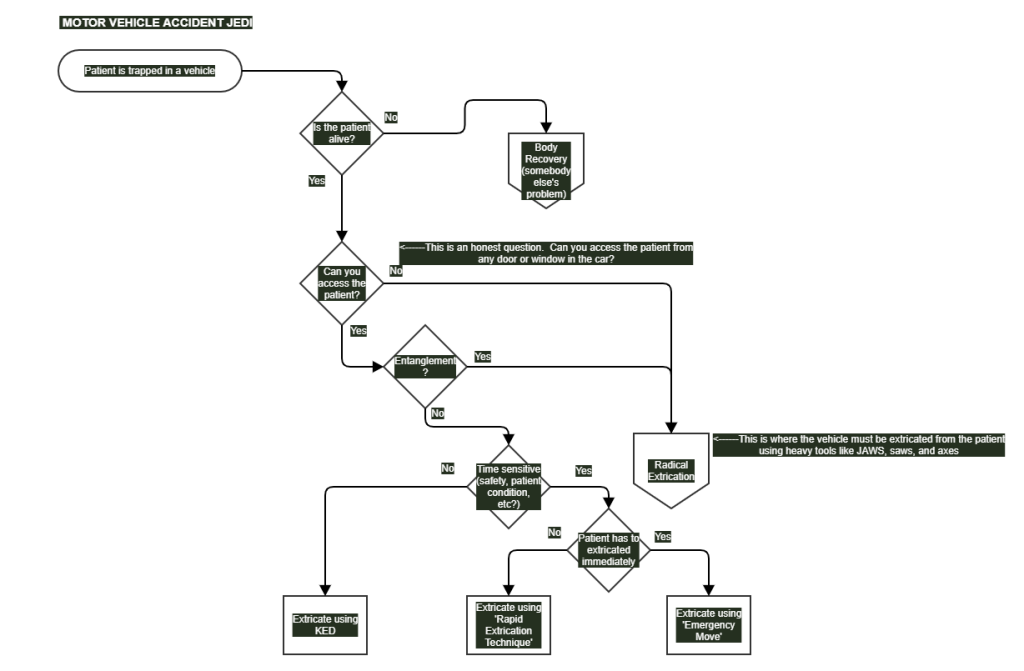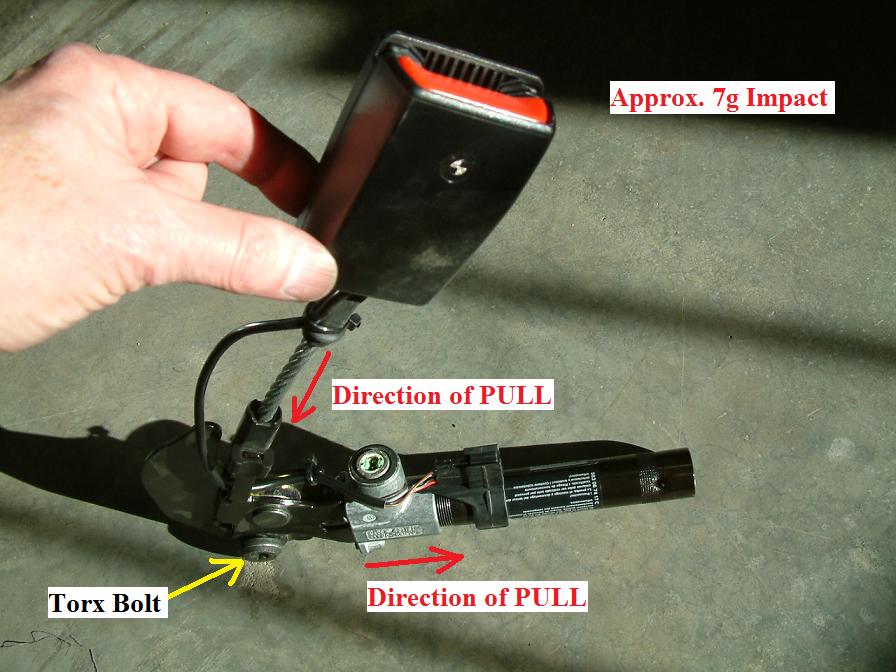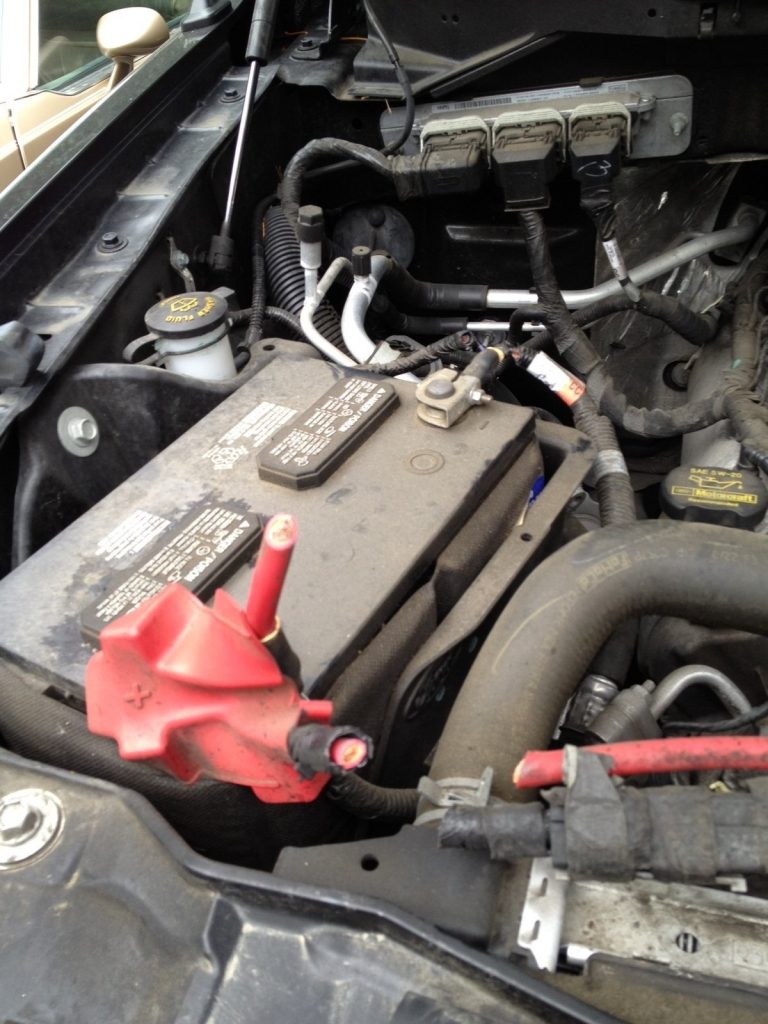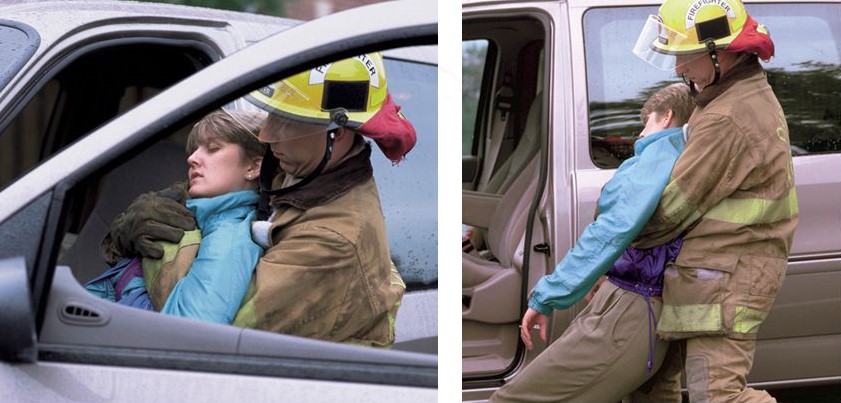Simple Extrication
Published (updated: ).
First, make sure the car is in park
When approaching a vehicle that has been in a motor vehicle collision, the medics should make sure the vehicle is in ‘park’ or in gear with the parking brake deployed. Turning off the ignition is another move that can make the accident safer. If the tires are damaged or the vehicle is unsteady, the medics shouldn’t approach the vehicle until cribbing or chocking (large blocks or wedges intended to support the weight of the vehicle) has been placed under the vehicle to keep it from moving.
If possible, disconnect the battery to decrease the risk of electrical fire or air bag deployment. Seatbelt tensioners are powered by a small explosive that creates a gas that turns a small turbine, resulting in the seatbelt tensing up. This system is designed to the pull occupants of the vehicle into their seat and retract with violent force without warning.
Gaining access to the patient

If the medics can access the patient simply by opening the door, they can probably extricate the patient without any delay. If the patient is locked in the vehicle, ask the patient to unlock the doors or lower the windows. Other things that the medics can do to make the extrication easier is move the seat back and lower the foot pedals (if equipped). Additionally, tilting the steering wheel may give the patient and medics more room to move the patient during the extrication process. The equipment needed to perform simple extrication should be assembled and brought to the patient. This equipment includes:
- Long back board
- Kendrick extrication device
- Straps
- Tape
- Cervical collar of appropriate size for patient or adjustable
- Cervical immobilization device or foam blocks once the head is mechanically secured to the long backboard
- Stretcher
Simple extrication
EMS is dispatched to motor vehicle to provide patient care, and if needed perform simple extrication. EMS personnel are trained to remove a patient from a vehicle that doesn’t require any destructive methods to gain access to the patient or remove the patient from the vehicle. Start by manually stabilizing the cervical spine and maintain the neck in the neutral and inline position. All of these movements assume the patient’s cervical spine has been broken and makes varying levels of effort to move the patient without moving the cervical spine:
- Kendrick Immobilization Device (KED) – A vest type immobilization device that is slid behind the patient’s back and secures to the patient under the patient’s shoulders. This method is the most time consuming but most protective of the three movements. It is also the easiest for the rescuers who utilize the integrated handles of the device.
- Rapid Extrication Technique – This method aims the patient’s back toward the outside of the car. The patient is lowered onto their back onto a long backboard and immobilized. This method is faster than using the KED but provides less protection to the cervical spine. This method is preferred over the KED because it is inherently faster and requires less equipment. This method is more difficult on rescuers backs due to twisting movements that are usually unavoidable during extrication.
- Emergency Move – This movement is intended for a dire emergency (like the vehicle is on fire or the patient is unresponsive). Basically, the rescuer aims to create a controlled fall of the patient’s body toward the ground from the car while attempting to maintain some minimal cervical spine precautions. Needless to say, this movement provides the least amount of cervical spine protection.







